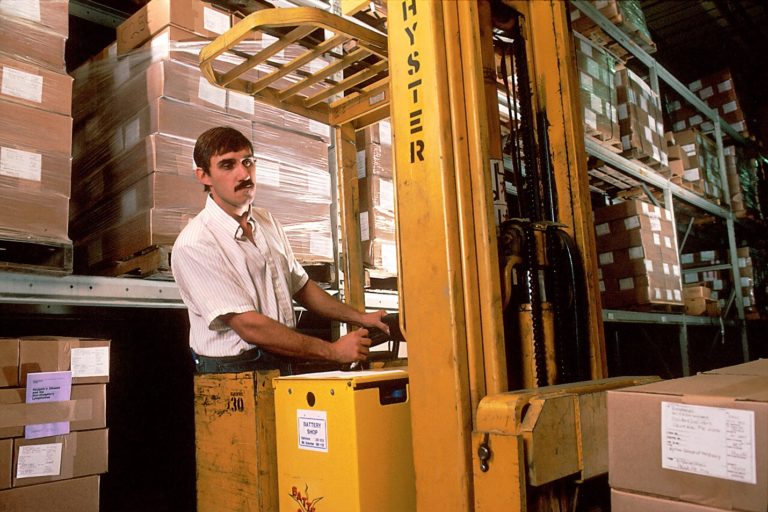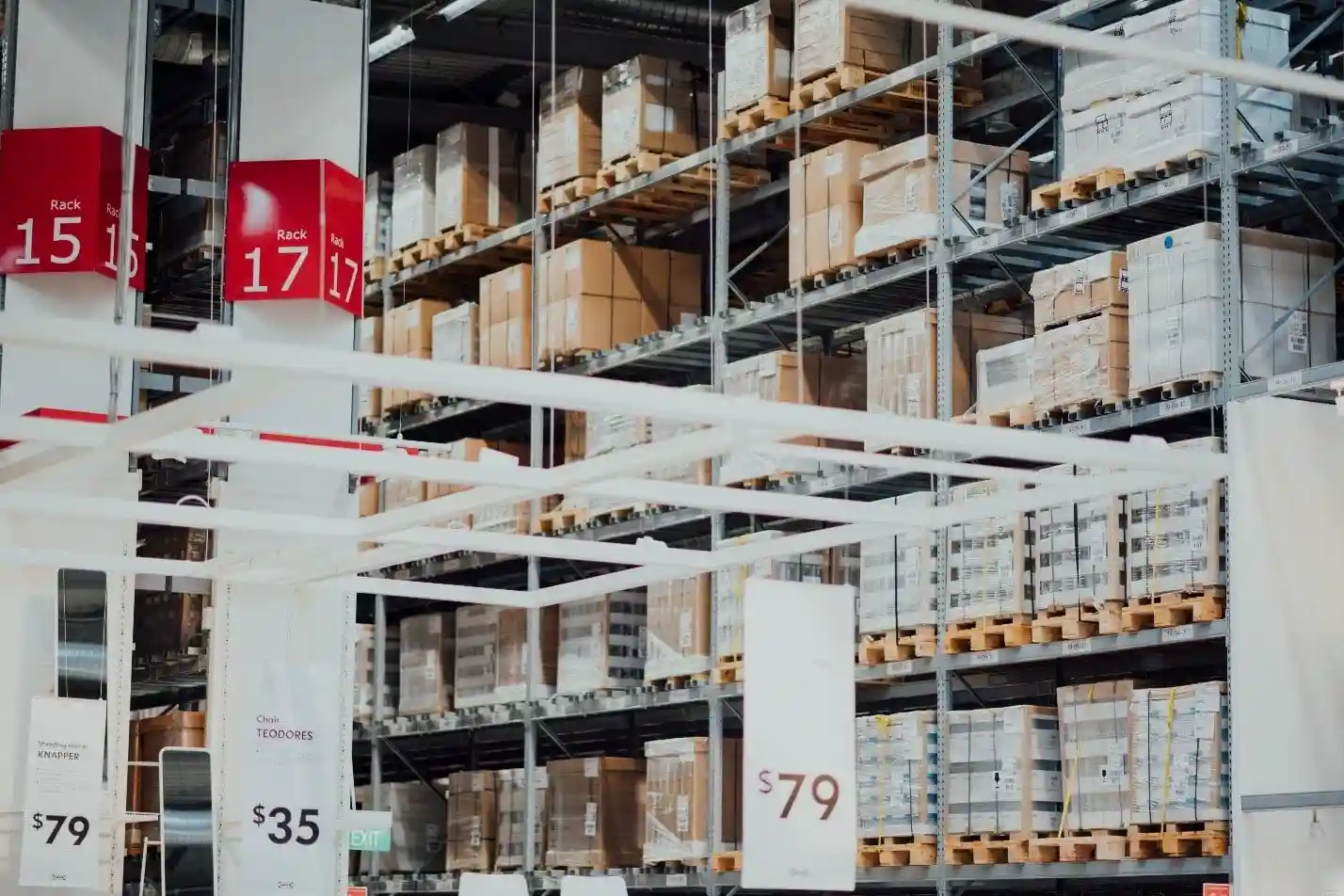
Material handling entails the movement of goods and materials in a warehouse, factory, or any other short distance gated area. Handling procedures may be manual or automated. An example of manual handling is when workers in a factory move products using forklifts, side-loaders, carts, and other equipment. An automatic process may involve a conveyor belt system moving raw materials in a manufacturing plant.
A sound handling system should be efficient as it has a massive influence on productivity levels, affecting the profit plant. This has increased the need for efficient supply systems. Automation has also influenced the material handling sector largely. Material handling companies like Mainway Handling are coming up with better and cheaper ways to drive manufacturing and production. Most material handling solutions involve the following equipment;

Storage and Handling Appliances
Storage appliances are those that hold products when there are downtimes or as they await transportation. It could either be long term or short-term. An example of short-term storage is when there are breaks in a long transportation system. Long term storage may apply when building upon stock. The appliances used are non-automated. Materials and products are stuck in shelves, pallets, racks, or any other storage unit, which puts them in an orderly manner as they await movement or consumption. Companies can customize their storage system to accommodate the type of materials they have. The goal is to conserve space in the inventory to rMaterial Handling and Conveyor Solutionseduce money spent on storage units. Some of the most common storage solutions include;
Racks and Shelves
These are fundamental tools while handling materials. In most cases, a rack is a steel structure with frames, connectors, and a beam system to provide support for materials during storage. Stands have a vertical design, thus save on space. Retrieval of items is mainly using equipment like forklifts. Shelves have fewer open areas than racks and are mostly used to store smaller and delicate materials. Retrieval of items is through hands.
Block Stacking
In this solution, units are stack on top of each other, then stored in the warehouse in blocks or lanes. When stacking the pallets, it is essential to consider the weight of the items, the pallets’ condition, and the forklift’s ability.
Engineered Systems
These are numerous and different units that work together to facilitate storage and transportation. In most cases, they are automatic, and they ease the movement of large materials and products around the warehouse. Examples of engineered systems include;
Conveyor Systems
Most companies use conveyor systems as a standard mechanical handling method to transport products and materials in the same building. They are a necessity when dealing with heavy products, mass-produced items, and sharp items. They use flexible chains, roller, and belts.
Automated Storage and Retrieval Systems
Automated Storage and Retrieval Systems in short AS/RS have racks, shelves, and aisles. A shuttle system retrieves items from the system automatically or under direction from a worker.
Automatic Guided Vehicles
Automatic Guided Vehicles. AGV movement is possible through lasers and visual magnets. The vehicles are robotic and follow specific wires or markers on the warehouse or manufacturing plant floor to transport massive materials.
Industrial Trucks
These are the various types of transportation means used to move products and materials on the warehouse floor. They are both manual and automatic. These tools also carry out loading and offloading. The primary use is when the materials or products that need transportation are low volumes, and the use of systems like conveyor belts could be costly. Some of them include;
Trucks
Trucks could either be pallet trucks or hand trucks. Hand trucks have a small platform used to set the edge of the load. They also have a handle for leverage. The hand truck tips the load, which then lies on the handle for transportation. As the name suggests, pallet trucks transport pallets. The platform slides into a pallet, then lift it. Pallet trucks can be manual or automatic.
Side loaders
Side loaders, also called Very Narrow Aisle (VNA), are trucks modeled to move objects in narrow aisles. Their design handles long loads efficiently. They have platforms around the forks, which improves the stability and safety levels when handling products and materials. Recently, developers came up with multi-directional forklifts. They have a higher-performing ability and may replace side loaders.
Walkie Stacker
This is an electric forklift, which requires a walk-behind person to operate. There are various types of walkie stackers: the standard one lift and move pallets for stretches. Walkies have an operation handle with controls. The operator holds onto the handle to lift objects and move front or back.
Bulk Material Handling Equipment
These are appliances that help in the movement of huge or loose materials and products. Transportation of bulk items is more comfortable after packaging them into units. For example, workers may funnel things into drums and hoppers for easier manipulation. Bulk handling systems are both automatic and non-automatic. Some examples are;
Reclaimers and Stackers
Stackers pile bulk loads such as soil, cereals, or ores to a stockpile. To recover the material, one may use a reclaimer. Thus, the two equipment perform opposite tasks. Stockpiles move in two directions; vertically by lowering or raising the boom or horizontally through the rail. Some can also rotate, which allows them to create two stockpiles on both sides of the conveyor. Stackers reduce the dust formed by reducing the distance that material falls to be on top of the stock. Reclaimers move on a rail in the middle of two stockpiles using a conveyor system to move materials. The different kinds include; bucket-lift, rocker, or counterweight boom.
Elevators
There are two types of elevators used in bulk goods; bucket elevators and grain elevators. Bucket elevators utilize a rotating chain to move materials vertically. Common types of bucket elevators are; positive discharge elevators, continuous discharge elevators, and centrifugal discharge elevators. The design featured in each meets the needs of a particular material. Grain elevators move miniature materials such as grain through production pathways. They are towers with bucket elevators. Grain elevators may have a system comprising weighbridges, testing offices, storage areas, and receiving areas.